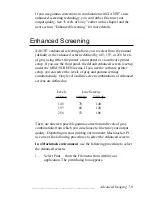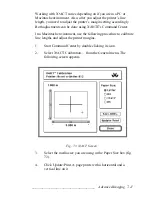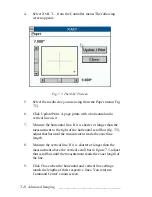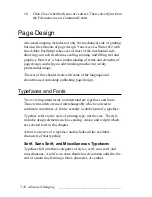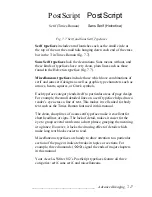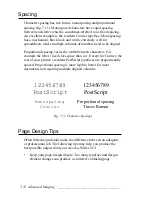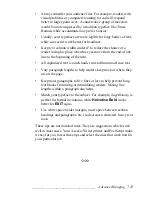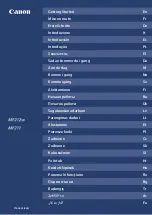
____________________________________ Advanced Imaging 7-23
•
Always consider your audience first. For example, readers with
visual problems or youngsters learning to read will respond
better to larger point sizes. A conservative group of investors
would be more impressed by a tradition typeface like Times
Roman, while accountants may prefer Courier.
•
Usually, serif typefaces are more legible for large bodies of text,
while sans serifs work better for headlines.
•
Keep text column widths under 4" to reduce the chance of a
reader losing his place when his eyes move from the end of one
line to the beginning of the next.
•
All capitalized text is much harder to read than mixed case text.
•
Vary paragraph lengths to help readers keep track of where they
are on the page.
•
Keep most paragraphs to five lines or less to help prevent long
text blocks from tiring or intimidating readers. Mixing line
lengths within a paragraph also helps.
•
Match your typeface to the subject. For example,
ZapfChancery
is
perfect for formal invitations, while
Helvetica Bold
works
better for
EXIT
signs.
•
Use white space (wider margins, more space between section
headings and paragraphs, etc.) to decrease a cluttered, heavy text
look.
These tips are not ironclad rules. They are suggestions which work
well in most cases. Your Accel-a-Writer printer and PostScript make
it easy for you to test these tips and select the ones that work best for
your particular job.
◊ ◊ ◊

